
The Ku Klux Klan, commonly shortened to the KKK or the Klan, is the name of several historical and current American white supremacist, far-right terrorist organizations and hate groups. According to historian Fergus Bordewich, the Klan was "the first organized terror movement in American history." Their primary targets at various times have been African Americans, as well as Jews and Catholics.

Nathan Bedford Forrest was a Confederate Army general during the American Civil War and was later the first Grand Wizard of the Ku Klux Klan from 1867 to 1869.
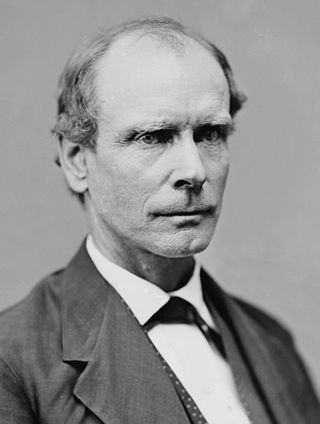
Amos Tappan Akerman was an American politician who served as United States Attorney General under President Ulysses S. Grant from 1870 to 1871. A native of New Hampshire, Akerman graduated from Dartmouth College in 1842 and moved South, where he spent most of his career. He first worked as headmaster of a school in North Carolina and as a tutor in Georgia. Having become interested in law, Akerman studied and passed the bar in Georgia in 1850; where he and an associate set up a law practice. He also owned a farm and enslaved eleven people. When the American Civil War broke out in 1861, Akerman joined the Confederate Army, where he achieved the rank of colonel.
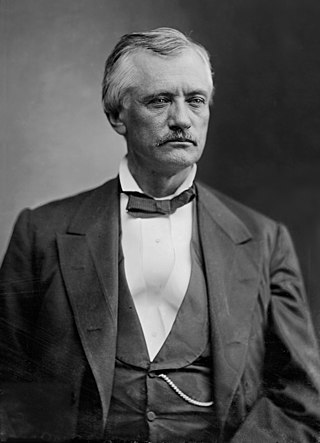
John Tyler Morgan was an American politician who was a brigadier general in the Confederate States Army during the American Civil War and later was elected for six terms as the U.S. Senator (1877–1907) from the state of Alabama. A prominent slaveholder before the Civil War, he became the second Grand Dragon of the Ku Klux Klan in Alabama during the Reconstruction era. Morgan and fellow Klan member Edmund W. Pettus became the ringleaders of white supremacy in Alabama and did more than anyone else in the state to overthrow Reconstruction efforts in the wake of the Civil War. When President Ulysses S. Grant dispatched U.S. Attorney General Amos Akerman to prosecute the Klan under the Enforcement Acts, Morgan was arrested and jailed.
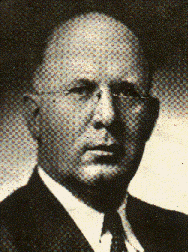
James Arnold Colescott was an American white supremacist who was Imperial Wizard of the Knights of the Ku Klux Klan. Under financial pressure from the Internal Revenue Service (IRS) for back taxes, he disbanded the second wave of the original Ku Klux Klan in 1944.
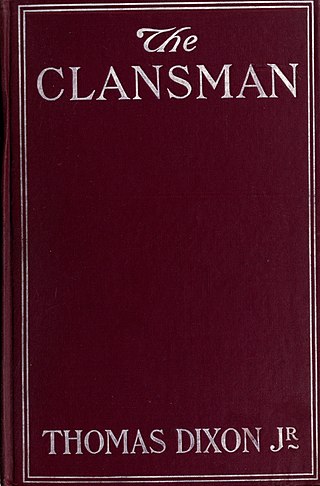
The Clansman: A Historical Romance of the Ku Klux Klan is a novel published in 1905, the second work in the Ku Klux Klan trilogy by Thomas Dixon Jr.. Chronicling the American Civil War and Reconstruction era from a pro-Confederate perspective, it presents the Ku Klux Klan heroically. The novel was adapted first by the author as a highly successful play entitled The Clansman (1905), and a decade later by D. W. Griffith in the 1915 movie The Birth of a Nation.
This is a partial list of notable historical figures in U.S. national politics who were members of the Ku Klux Klan before taking office. Membership of the Klan is secret. Political opponents sometimes allege that a person was a member of the Klan, or was supported at the polls by Klan members.

Women of the Ku Klux Klan (WKKK), also known as Women's Ku Klux Klan, and Ladies of the Invisible Empire, held to many of the same political and social ideas of the KKK but functioned as a separate branch of the national organization with their own actions and ideas. While most women focused on the moral, civic, and educational agendas of the Klan, they also had considerable involvement in issues of race, class, ethnicity, gender, and religion. The women of the WKKK fought for educational and social reforms like other Progressive reformers but with extreme racism and intolerance.

The White Knights of the Ku Klux Klan is a Ku Klux Klan organization which is active in the United States. It originated in Mississippi and Louisiana in the early 1960s under the leadership of Samuel Bowers, its first Imperial Wizard. The White Knights of Mississippi were formed in December 1963, when they separated from the Original Knights after the resignation of Imperial Wizard Roy Davis. Roughly 200 members of the Original Knights of Louisiana also joined the White Knights. The White Knights were not interested in holding public demonstrations nor were they interested in letting any information about themselves get out to the masses. Similar to the United Klans of America (UKA), the White Knights of Mississippi were very secretive about their group. Within a year, their membership was up to around six thousand, and they had Klaverns in over half of the counties in Mississippi. By 1967, the number of active members had shrunk to around four hundred.

Henry Lowndes Muldrow was an American politician who served as the First Assistant Secretary of the Interior in the first Cleveland administration. Prior to this he served as U.S. Representative from Mississippi's 1st congressional district, a member of the Mississippi House of Representatives and as an officer of the Confederate States Army who commanded a cavalry regiment in the Western Theater of the American Civil War. He was "Grand Cyclops" of the Oktibbeha County Ku Klux Klan den.
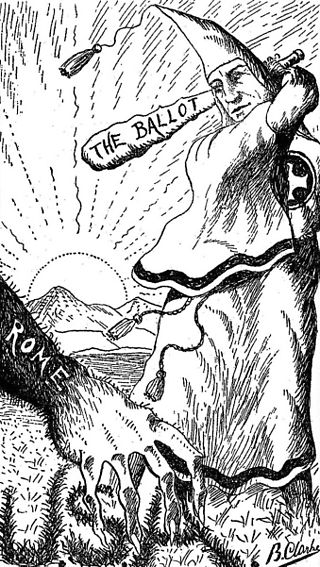
Heroes of the Fiery Cross is a book in praise of the Ku Klux Klan, published in 1928 by Protestant Bishop Alma Bridwell White, in which she "sounds the alarm about imagined threats to Protestant Americans from Catholics and Jews", according to author Peter Knight. In the book she asks rhetorically, "Who are the enemies of the Klan? They are the bootleggers, law-breakers, corrupt politicians, weak-kneed Protestant church members, white slavers, toe-kissers, wafer-worshippers, and every spineless character who takes the path of least resistance." She also argues that Catholics are removing the Bible from public schools. Another topic is her anti-Catholic stance towards the United States presidential election of 1928, in which Catholic Al Smith was running for president.

Samuel Green was a Grand Wizard of the Knights of the Ku Klux Klan in the late 1940s, organizing its third and final reformation in 1946.

The Meridian race riot of 1871 was a race riot in Meridian, Mississippi in March 1871. It followed the arrest of freedmen accused of inciting riot in a downtown fire, and blacks' organizing for self-defense. Although the local Ku Klux Klan (KKK) chapter had attacked freedmen since the end of the Civil War, generally without punishment, the first local arrest under the 1870 act to suppress the Klan was of a freedman. This angered the black community. During the trial of black leaders, the presiding judge was shot in the courtroom, and a gunfight erupted that killed several people. In the ensuing mob violence, whites killed as many as 30 blacks over the next few days. Democrats drove the Republican mayor from office, and no person was charged or tried in the freedmen's deaths.
The Original Ku Klux Klan of the Confederacy was a Klan faction led by Asa Carter in the late 1950s. Despite the group's brief lifespan, it left its mark with a violent record, including an assault on Nat King Cole, participation in a riot in Clinton, Tennessee, and one of the few documented cases of castration by the Klan.

Ku Klux Klan (KKK) nomenclature has evolved over the order's nearly 160 years of existence. The titles and designations were first laid out in the original Klan's prescripts of 1867 and 1868, then revamped with William J. Simmons's Kloran of 1916. Subsequent Klans have made various modifications.
The Association of Georgia Klans, also known as the Associated Klans of Georgia was a Klan faction organized by Dr. Samuel Green in 1944, and led by him until his death in 1949. At its height the organization had klaverns in each of Georgia's 159 counties, as well as klaverns in Alabama, Tennessee, South Carolina and Florida. It also had connections with klaverns and kleagles in Ohio and Indiana. After Green's death, however, the organization foundered as it split into different factions, was hit with a tax lien and was beset by adverse publicity. It was moribund by the time of the Supreme Court's "Black Monday" ruling in 1954. A second Association of Georgia Klans was formed when Charles Maddox led dissatisfied members out of the U.S. Klans in 1960. This group appears to have folded into James Venable's National Knights of the Ku Klux Klan by 1965. There is also a current Klan group by that name.

The Ku Klux Klan is an organization that expanded operations into Canada, based on the second Ku Klux Klan established in the United States in 1915. It operated as a fraternity, with chapters established in parts of Canada throughout the 1920s and early 1930s. The first registered provincial chapter was registered in Toronto in 1925 by two Americans and a Canadian. The organization was most successful in Saskatchewan, where it briefly influenced political activity and whose membership included a member of Parliament, Walter Davy Cowan.
Anthony Dickinson Sayre was an Alabama lawyer and politician who notably served as a state legislator in the Alabama House of Representatives (1890-1893), as the President of the Alabama State Senate (1896-97), and later as an Associate Justice of the Supreme Court of Alabama (1909-1931). Influential in Alabama politics for nearly half-a-century, Sayre is widely regarded by historians as the legal architect who laid the foundation for the state's discriminatory Jim Crow laws.
Alexander Boyd was notable as the Republican County Solicitor and Register in Chancery of Greene County, Alabama in 1870 during Reconstruction who was murdered by a lynching party of Ku Klux Klan members. He was fatally shot on March 31, 1870 in Eutaw, the county seat. The Klan members apparently intended to hang him in the square in a public lynching, to demonstrate their power during this period and their threat to Republicans.
Allen Pardee Huggins (1839–1916) was a Union Army soldier, Freedmen’s Bureau official, sheriff, county school superintendent, tax official, and state legislator in Mississippi.
















